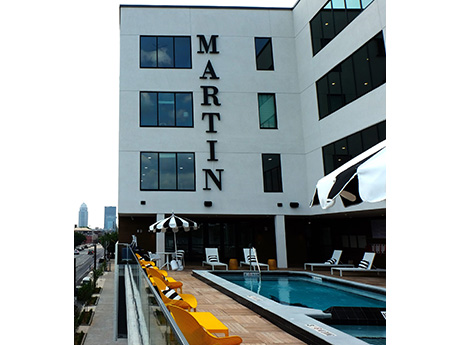Louisville, perhaps the center of the universe for horses and bourbon, is a somewhat undiscovered gem lying at the northern edge of the Southeast. The metro, with a population of just under 1.4 million people, is a steady performer across virtually all measurables, producing consistent and predictable metrics that may not dazzle Wall Street but certainly have not disappointed the base of capital invested in this riverfront market.

The Kentucky Derby, which ran for the 149th time this past May, produces $400 million in economic development annually and is likely the first mental image conjured up when the term “Louisville” is mentioned.
Kentucky bourbon likely comes to mind next as a $9 billion industry across the state, with roots as deep as oak. However, there’s much more to the Louisville metro.
Through the first half of 2023, the Louisville metro area had recovered virtually all of the more than 55,000 jobs the market lost in 2020. Interestingly but not surprisingly, arts, entertainment and recreation posted a net 7.5 percent increase in jobs from 2020 through 2022, more than erasing a blistering 2020 loss of 25.4 percent of the jobs in this sector.
Less glamorous but perhaps more critical is transportation and warehousing, which is the only employment sector in the Louisville metro to post employment gains each year from 2018 through 2022.
Louisville is dissected by I-65, one of the most fundamentally important of all U.S. trade routes. The market lies virtually at the economic center of the country.
UPS, the largest employer in the metro with 25,000 jobs, calls Louisville headquarters for UPS Air Cargo. The division services 200 airports across the globe and operates its 290 aircraft out of Louisville Muhammad Ali International Airport. Combining UPS with Amazon, which also maintains significant operations in the Louisville metro, logistics is a core employment driver for this metro.
Multifamily investment sales volume for the trailing five years (August 2018 through July 2023) totaled $4.4 billion. Nearly half of that volume, $2.1 billion, occurred in 2022 alone at blended cap rates of 5 percent. Like virtually every other market in the United States, year-to-date sales volume has slowed dramatically as the capital markets malaise continues to root in.
Active capital in Louisville since 2022 includes a diverse array of sources seeking exposure in this stable metropolitan area. Both buyers and sellers are actively engaged in pricing discovery in the current dislocation, as the bid-ask gap widens out and the buy-side finds itself engaged in a “race to positive leverage.”
Active capital in the Louisville metro ranges from East Coast institutional investors to local private firms with a variety of other destinations and classifications represented. The most notable names recently taking significant positions in Louisville include Starwood, Blackstone, The Connor Group, Passco Cos., Covenant Capital, 29th Street Capital and Stoneweg.
Unlike many other markets, the capital will still underwrite rent growth in Louisville.
Multifamily fundamentals in the metro remain favorable, and Louisville finds itself in a coveted “outperform” position relative to most other markets across the United States. Second-quarter rent growth was 5.2 percent year-over-year, placing Louisville in a respectable rank of No. 39 out of 150 markets nationally. This compares with 2022 rent growth of 8.6 percent and 2024 forecast rent growth of 4.3 percent.
Though Louisville is posting favorable metrics, rent growth has plummeted to zero or worse in many of the traditionally hotter markets across the country. Louisville occupancy for second-quarter was 94.6 percent, with 2024 forecasts tightening up a bit to 95.2 percent, according to Axiometrics.
Metro Louisville’s rent-to-income levels are quite favorable at a current 25.3 percent, placing Louisville among the most affordable markets in the nation.
Levels of new supply added to the Louisville metro have been remarkably stable. The numbers of units the past several years are as follows: 2,569 units in 2020 (2.9 percent of base inventory); 2,233 units in 2021 (2.4 percent); 2,062 in 2022 (2.2 percent); and a forecasted 924 units in 2023 (1 percent). Forecasted levels of supply for 2024 through 2027 range from 1,200 to 2,000 annually.
Supply exists throughout the market, including southern Indiana portions of the metro and perhaps most notably the very popular NuLu submarket just east of downtown Louisville (see Property Profile graphic).
All things considered, at both micro and macro levels the Louisville metro has demonstrated recovery, resiliency and stability. Combine these features with Louisville’s current “outperform” status and it’s no wonder that the market has caught the attention of some big names in the apartment space.
Look for this riverfront market to continue to garner attention on a national level as it continues forward on a very solid foundation.
— By Steve LaMotte Jr., Executive Vice President, CBRE. This article was originally published in the September 2023 issue of Southeast Real Estate Business.


